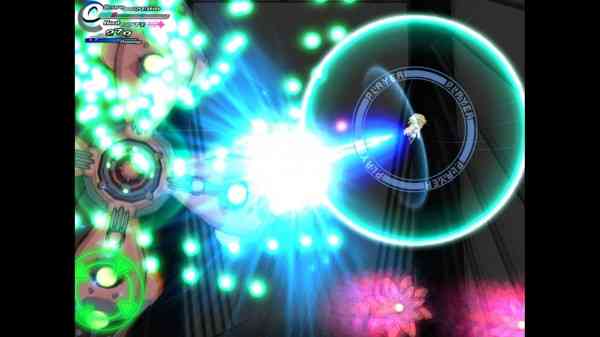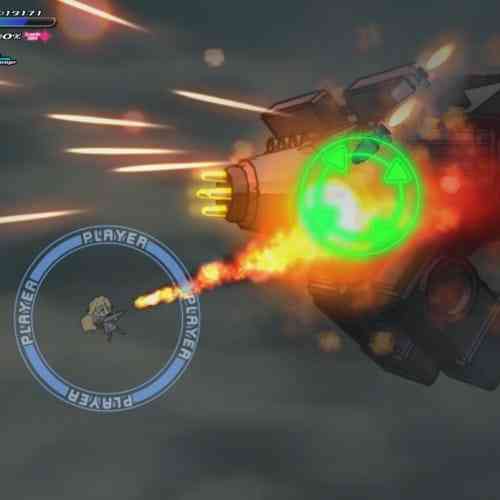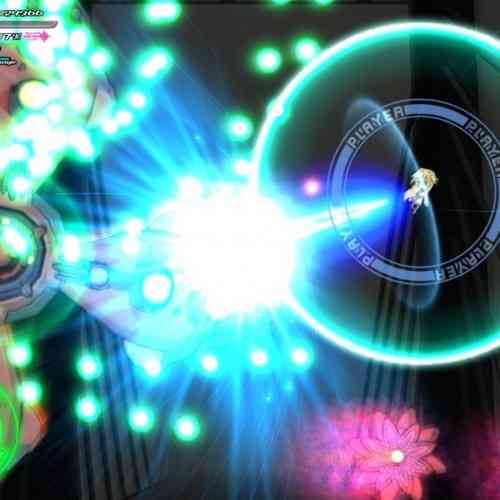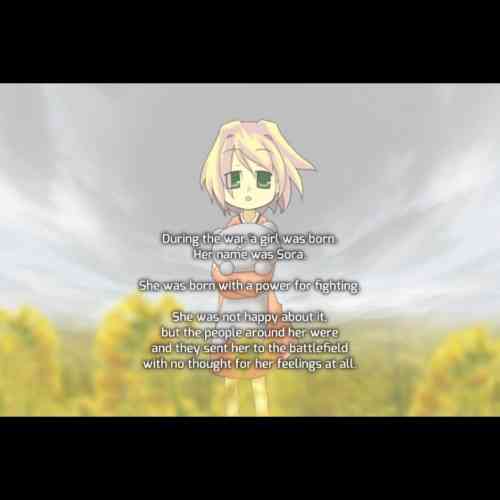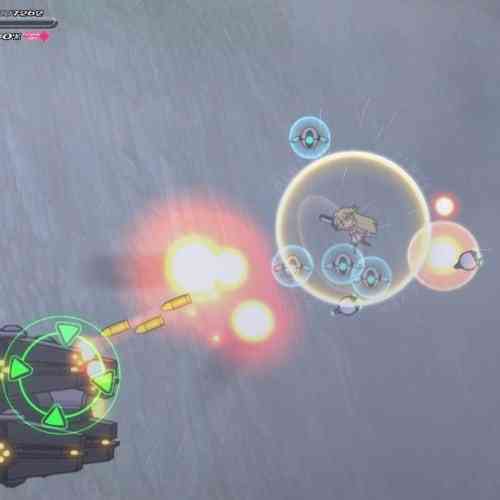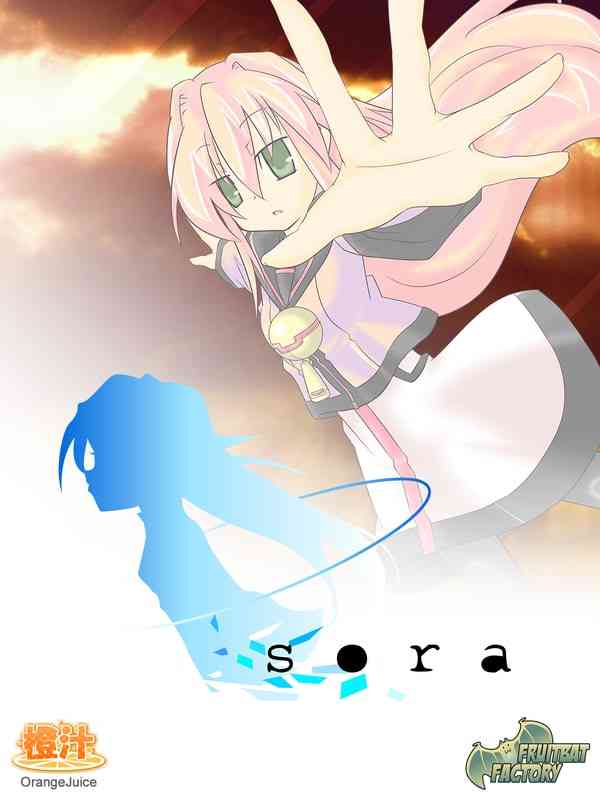From the developers at Orange_Juice, and the sequel to the high-speed shoot’em’up Suguri, Sora is a bullet hell game titled after a girl that was genetically altered for the sole purpose of war. The planet is nearing an apocalyptic end as Sora meets other altered beings on her journey in what is to become the last war the planet will ever witness. Although the introduction of other cyber humans was interesting, the narrative takes a back seat, through minimal cinematic and dialogue exchanges, to the colorful and fast-paced combat on-screen. Sora throws multiple mechanics at the player and forces them to experiment and ultimately find a strategy that gets them through wave after wave of an opposing robot army.
The game focuses on three weapon sets: your main laser beams, a sub class that I chose to be a handy bazooka, and a special weapon in the form of a deadly sword. Players can mix and match attacks between the three variations, while even being able to cancel attacks after a shot has been fired. The game freezes Sora in place, a second or two after an attack, but that is remedied by the ability to dash away immediately after a laser or rocket shot has been fired. Players are warned, by the tutorial instructor named Sham, to keep dashes in check as they raise a player’s heat meter that consequently multiplies the damage inflicted upon them by enemy forces. While the heat meter drops to zero rather quickly, there’s still half a second of panic as the screen could at once be filled with a barrage of robot attacks that will result in being kicked out of the level after a death.
______________________________
“Sora succeeds in providing a satisfying toolset for players to mix and match playstyles and attacks.”
The aforementioned heat level also increases when Sora dashes through an enemy laser attack, while missile attacks must either be destroyed or dodged. Once dashing through a laser beam, a ring is emitted that can regenerate the players health if you are able to guide a missile attack through the hooped ring. It seems rather random but in practice it offers a fun cat and mouse meta-game if you so choose to take the risk and regain your health. Sora is filled with gameplay mechanics much akin to last year’s Metal Gear Solid V. The developers throw in dozens of ways to play and manipulate the game that both confused me in the middle of combat trying to remember what command does what, and also forced me to experiment with different combinations and opened up new ways to tackle enemy encounters and evolving boss fights. Thankfully, the game auto-locks onto adversaries so the player doesn’t have to deal with that in the midst of a firing squad of enemies with fast tracking artillery.
The game introduces hyper attacks that work as specials when a separate gauge is filled. Hyper attacks can only be used three times per level and can be combined with the players three weapon sets that result in different attacks appropriate for ever-changing firefight scenarios. Differing enemy types and boss battles require different move sets like waiting for an opportunity to attack end level bosses and playing patiently or unleashing hyper attack after hyper attack to push through the last moments of a level swarmed with live ammo and hulking opposition. While I kept a consistent bazooka-dash-hyper combo throughout the adventure, varying gameplay styles can succeed which is a testament to the games underlying design.
The game is wrapped in an interesting anime art-style jam-packed with upbeat electronic rhythms, even though they get tiring very quickly, extending to the sounds of the menu system that, much like the plethora of mechanics, evoke Metal Gear Solid as you configure the controls or tune hyper attacks to standard or advanced variants. Bland backgrounds take away from the overall visual experience, especially when it results in a plethora of cheap deaths as lighting effects go off that looked like attacks from enemies.
Sora succeeds in providing a satisfying toolset for players to mix and match playstyles and attacks. The sheer number of mechanics adversely gets in the way of consistently fun combat as players are bound to forget the dozens of weapons and dash combinations triggered by an insane number of button commands that are introduced.
***A PC review code was provided by the publisher***
The Good
- Huge toolbox of gameplay options
- Ability to combine playstyles
- Deep mechanics
The Bad
- Confusing controls
- Lackluster visuals
- Annoying soundtrack
